- Home
- Barbara W. Tuchman
The Proud Tower: A Portrait of the World Before the War, 1890-1914
The Proud Tower: A Portrait of the World Before the War, 1890-1914 Read online
More Praise for The Proud Tower
“Mrs. Tuchman’s popularity is due to more than her skill with words … she never loses sight of individuals, and she is not afraid to tell a story.… As in all her books, this one is resplendent with people … marvels of idiosyncratic fullness.”
—The New York Times Book Review
“Her Pulitzer Prize-winning The Guns of August was an expert evocation of the first spasm of the 1914–18 war. She brings the same narrative gifts and panoramic camera eye to her portrait of the antebellum world.”
—Newsweek
“An exquisitely written and thoroughly engrossing work.… The author’s knowledge and skill are so impressive that they whet the appetite for more.… [To read these polished essays] is an esthetically rewarding experience. No one should forgo the opportunity.”
—Chicago Tribune
“Solid and interesting.… Bright with sketches of hundreds of men.”
—The Philadelphia Inquirer
“Mrs. Tuchman paints the scene for us with a masterly brush, a scene glittering and brilliant, sumptuous and outrageous.”
—Herald Tribune
“A stunning success … As remarkable a work as The Guns of August.”
—Library Journal
By Barbara W. Tuchman
BIBLE AND SWORD
THE ZIMMERMANN TELEGRAM
THE GUNS OF AUGUST
THE PROUD TOWER
STILWELL AND THE AMERICAN EXPERIENCE IN CHINA
A DISTANT MIRROR
PRACTICING HISTORY
THE MARCH OF FOLLY
THE FIRST SALUTE
A Ballantine Book
Published by The Random House Publishing Group
Copyright © 1962, 1963, 1965 by Barbara W. Tuchman
Copyright © 1966 by The Macmillam Company
Copyright renewed 1994 by Dr. Lester Tuchman
All rights reserved.
Published in the United States by Ballantine Books, an imprint of The Random House Publishing Group, a division of Random House, Inc., New York, and distributed in Canada by Random House of Canada Limited, Toronto. Originally published by The Macmillan Company in 1966.
Chapter 2 appeared, in part, in The Atlantic Monthly for May 1963. Parts of Chapter 3 were published in American Heritage for December 1962 and in The Nation 100th Anniversary issue, September 1965. Parts of Chapter 1 were published in Vogue in 1965.
Grateful acknowledgment is made to the following for permission to reprint previously published material:
Doubleday and A.P. Watt Ltd.: “The White Man’s Burden” and eight lines from “The Truce of the Bear” (“The Bear that Walks Like a Man”) from Rudyard Kipling’s Verse: Definitive Edition. Reprinted by permission of Doubleday and A.P. Watt Ltd. on behalf of The National Trust for Places of Historic Interest or Natural Beauty.
Henry Holt and Company, Inc. and The Society of Authors: Excerpt from “On the Idle Hill of Summer” from “A Shropshire Lad” from The Collected Poems of A.E. Housman. Reprinted by permission of Henry Holt and Co., Inc., and The Society of Authors as the literary representative of the Estate of A.E. Housman.
A.P Watt Ltd.: Four lines from “The Valley of the Black Pig” from The Collected Poems of W.B. Yeats. Reprinted by permission of A.P. Watt Ltd. on behalf of Michael Yeats.
Ballantine and colophon are registered trademarks of Random House, Inc.
www.ballantinebooks.com
Library of Congress Catalog Card Number: 96–96511
eISBN: 978-0-307-79811-4
v3.1
While from a proud tower in the town
Death looks gigantically down.
From “The City in the Sea”
EDGAR ALLAN POE
Acknowledgments
To Mr. Cecil Scott of The Macmillan Company, a participant in this book from the first outline to the end, I owe a writer’s most important debt: for the steady companionship of an interested reader and for constructive criticism throughout mixed with encouragement in times of need.
For advice, suggestions and answers to queries I am grateful to Mr. Roger Butterfield, author of The American Past; Professor Fritz Epstein of Indiana University; Mr. Louis Fischer, author of The Life of Lenin; Professor Edward Fox of Cornell University; Mr. K. A. Golding of the International Transport Workers’ Federation, London; Mr. Jay Harrison of Columbia Records; Mr. John Gutman of the Metropolitan Opera; Mr. George Lichtheim of the Institute on Communist Affairs, Columbia University; Mr. William Manchester, author of The House of Krupp; Professor Arthur Marder, editor of the letters of Sir John Fisher; Mr. George Painter, the biographer of Proust; Mr. A. L. Rowse, author of an introduction to the work of Graham Wallas; Miss Helen Ruskell and the staff of the New York Society Library; Mr. Thomas K. Scherman, director of the Little Orchestra Society; Mrs. Janice Shea for information about the circus in Germany; Professor Reba Soffer of San Fernando Valley State College for information on Wilfred Trotter; Mr. Joseph C. Swidler, chairman of the Federal Power Commission; and Mr. Louis Untermeyer, editor, among much else, of Modern British Poetry. Equal gratitude extends to the many others who gave me verbal aid of which I kept no record.
For help in finding certain of the illustrations I am indebted to Mr. A. J. Ubels of the Royal Archives at The Hague; to the staffs of the Art and Print Rooms of the New York Public Library; and to Mr. and Mrs. Harry Collins of Brown Brothers.
I would like to express particular thanks to two indefatigable readers of the proofs, Miss Jessica Tuchman and Mr. Timothy Dickinson, for improvements and corrections, respectively; and to Mrs. Esther Bookman, who impeccably typed the manuscript of both this and my previous book, The Guns of August.
BARBARA W. TUCHMAN
Contents
Cover
Other Books by This Author
Title Page
Copyright
Acknowledgments
Illustrations
Foreword
1 THE PATRICIANS
England: 1895–1902
2 THE IDEA AND THE DEED
The Anarchists: 1890–1914
3 END OF A DREAM
The United States: 1890–1902
4 “GIVE ME COMBAT!”
France: 1894–99
5 THE STEADY DRUMMER
The Hague: 1899 and 1907
6 “NEROISM IS IN THE AIR”
Germany: 1890–1914
7 TRANSFER OF POWER
England: 1902–11
8 THE DEATH OF JAURÈS
The Socialists: 1890–1914
Afterword
References
About the Author
Illustrations
FOLLOWING THIS PAGE
5.1 Lord Salisbury
5.2 Lord Ribblesdale by Sargent, 1902
5.3 The Wyndham sisters by Sargent, 1899
5.4 Chatsworth
5.5 Prince Peter Kropotkin
5.6 Editorial office of La Révolte
5.7 “Slept in That Cellar Four Years”: photograph by Jacob Riis, about 1890
5.8 “Lockout”: original title “l’Attentat du Pas de Calais,” by Théophile Steinlen, from Le Chambard Socialiste,” Dec. 16, 1893
5.9 Thomas B. Reed
5.10 Captain (later Admiral) Alfred Thayer Mahan
5.11 Charles William Eliot
5.12 Samuel Gompers
5.13 The mob during Zola’s trial: original title “Les Moutons de Boisdeffre,” by Steinlen, from La Feuille, Feb. 28, 1898
5.14 The “Syndicate”: original title “Le Pouvoir Civil,” by Forain, from Psst!, Jun
e 24, 1899
5.15 “Allegory”: by Forain, from Psst!, July 23, 1898
5.16 “Truth Rising from Its Well,” by Caran d’Ache, from Psst!, June 10, 1899
5.17 British delegation to The Hague, 1899
5.18 Paris Exposition, 1900: Porte Monumentale and the Palace of Electricity
5.20 Alfred Nobel
5.21 Bertha von Suttner
5.22 The Krupp works at Essen, 1912
5.23 Richard Strauss
5.24 Friedrich Nietzsche watching the setting sun, Weimar, 1900
5.25 A beer garden in Berlin
5.26 Nijinsky as the Faun: design by Léon Bakst
5.27 Arthur James Balfour
5.28 Coal strike, 1910: mine owners arriving at 10 Downing Street
5.29 Seaman’s strike, 1911
5.30 David Lloyd George
5.31 August Bebel
5.32 Keir Hardie
5.33 “Strike,” painting by Steinlen
5.34 Jean Jaurès
Foreword
The epoch whose final years are the subject of this book did not die of old age or accident but exploded in a terminal crisis which is one of the great facts of history. No mention of that crisis appears in the following pages for the reason that, as it had not yet happened, it was not a part of the experience of the people of this book. I have tried to stay within the terms of what was known at the time.
The Great War of 1914–18 lies like a band of scorched earth dividing that time from ours. In wiping out so many lives which would have been operative on the years that followed, in destroying beliefs, changing ideas, and leaving incurable wounds of disillusion, it created a physical as well as psychological gulf between two epochs. This book is an attempt to discover the quality of the world from which the Great War came.
It is not the book I intended to write when I began. Preconceptions dropped off one by one as I investigated. The period was not a Golden Age or Belle Epoque except to a thin crust of the privileged class. It was not a time exclusively of confidence, innocence, comfort, stability, security and peace. All these qualities were certainly present. People were more confident of values and standards, more innocent in the sense of retaining more hope of mankind, than they are today, although they were not more peaceful nor, except for the upper few, more comfortable. Our misconception lies in assuming that doubt and fear, ferment, protest, violence and hate were not equally present. We have been misled by the people of the time themselves who, in looking back across the gulf of the War, see that earlier half of their lives misted over by a lovely sunset haze of peace and security. It did not seem so golden when they were in the midst of it. Their memories and their nostalgia have conditioned our view of the pre-war era but I can offer the reader a rule based on adequate research: all statements of how lovely it was in that era made by persons contemporary with it will be found to have been made after 1914.
A phenomenon of such extended malignance as the Great War does not come out of a Golden Age. Perhaps this should have been obvious to me when I began but it was not. I did feel, however, that the genesis of the war did not lie in the Grosse Politik of what Isvolsky said to Aehrenthal and Sir Edward Grey to Poincaré; in that tortuous train of Reinsurance treaties, Dual and Triple Alliances, Moroccan crises and Balkan imbroglios which historians have painstakingly followed in their search for origins. It was necessary that these events and exchanges be examined and we who come after are in debt to the examiners; but their work has been done. I am with Sergei Sazonov, Russian Foreign Minister at the time of the outbreak of the War, who after a series of investigations exclaimed at last, “Enough of this chronology!” The Grosse Politik approach has been used up. Besides, it is misleading because it allows us to rest on the easy illusion that it is “they,” the naughty statesmen, who are always responsible for war while “we,” the innocent people, are merely led. That impression is a mistake.
The diplomatic origins, so-called, of the Great War are only the fever chart of the patient; they do not tell us what caused the fever. To probe for underlying causes and deeper forces one must operate within the framework of a whole society and try to discover what moved the people in it. I have tried to concentrate on society rather than the state. Power politics and economic rivalries, however important, are not my subject.
The period of this book was above all the culmination of a century of the most accelerated rate of change in man’s record. Since the last explosion of a generalized belligerent will in the Napoleonic wars, the industrial and scientific revolutions had transformed the world. Man had entered the Nineteenth Century using only his own and animal power, supplemented by that of wind and water, much as he had entered the Thirteenth, or, for that matter, the First. He entered the Twentieth with his capacities in transportation, communication, production, manufacture and weaponry multiplied a thousandfold by the energy of machines. Industrial society gave man new powers and new scope while at the same time building up new pressures in prosperity and poverty, in growth of population and crowding in cities, in antagonisms of classes and groups, in separation from nature and from satisfaction in individual work. Science gave man new welfare and new horizons while it took away belief in God and certainty in a scheme of things he knew. By the time he left the Nineteenth Century he had as much new unease as ease. Although fin de siècle usually connotes decadence, in fact society at the turn of the century was not so much decaying as bursting with new tensions and accumulated energies. Stefan Zweig who was thirty-three in 1914 believed that the outbreak of war “had nothing to do with ideas and hardly even with frontiers. I cannot explain it otherwise than by this surplus force, a tragic consequence of the internal dynamism that had accumulated in forty years of peace and now sought violent release.”
In attempting to portray what the world before the war was like my process has been admittedly highly selective. I am conscious on finishing this book that it could be written all over again under the same title with entirely other subject matter; and then a third time, still without repeating. There could be chapters on the literature of the period, on its wars—the Sino-Japanese, Spanish-American, Boer, Russo-Japanese, Balkan—on imperialism, on science and technology, on business and trade, on women, on royalty, on medicine, on painting, on as many different subjects as might appeal to the individual historian. There could have been chapters on King Leopold II of Belgium, Chekhov, Sargent, The Horse, or U.S. Steel, all of which figured in my original plan. There should have been a chapter on some ordinary everyday shopkeeper or clerk representing the mute inglorious anonymous middle class but I never found him.
I think I owe the reader a word about my process of selection. In the first place I confined myself to the Anglo-American and West European world from which our experience and culture most directly derive, leaving aside the East European which, however important, is a separate tradition. In choice of subjects the criterion I used was that they must be truly representative of the period in question and have exerted their major influence on civilization before 1914, not after. This consideration ruled out the automobile and airplane, Freud and Einstein and the movements they represented. I also ruled out eccentrics, however captivating.
I realize that what follows offers no over-all conclusion but to draw some tidy generalization from the heterogenity of the age would be invalid. I also know that what follows is far from the whole picture. It is not false modesty which prompts me to say so but simply an acute awareness of what I have not included. The faces and voices of all that I have left out crowd around me as I reach the end.
BARBARA W. TUCHMAN
I
The Patricians
ENGLAND: 1895–1902
I
The Patricians
THE LAST government in the Western world to possess all the attributes of aristocracy in working condition took office in England in June of 1895. Great Britain was at the zenith of empire when the Conservatives won the General Election of that year, and the Cabinet they formed was her
superb and resplendent image. Its members represented the greater landowners of the country who had been accustomed to govern for generations. As its superior citizens they felt they owed a duty to the State to guard its interests and manage its affairs. They governed from duty, heritage and habit—and, as they saw it, from right.
The Prime Minister was a Marquess and lineal descendant of the father and son who had been chief ministers to Queen Elizabeth and James I. The Secretary for War was another Marquess who traced his inferior title of Baron back to the year 1181, whose great-grandfather had been Prime Minister under George III and whose grandfather had served in six cabinets under three reigns. The Lord President of the Council was a Duke who owned 186,000 acres in eleven counties, whose ancestors had served in government since the Fourteenth Century, who had himself served thirty-four years in the House of Commons and three times refused to be Prime Minister. The Secretary for India was the son of another Duke whose family seat was received in 1315 by grant from Robert the Bruce and who had four sons serving in Parliament at the same time. The President of the Local Government Board was a pre-eminent country squire who had a Duke for brother-in-law, a Marquess for son-in-law, an ancestor who had been Lord Mayor of London in the reign of Charles II, and who had himself been a Member of Parliament for twenty-seven years. The Lord Chancellor bore a family name brought to England by a Norman follower of William the Conqueror and maintained thereafter over eight centuries without a title. The Lord Lieutenant for Ireland was an Earl, a grandnephew of the Duke of Wellington and a hereditary trustee of the British Museum. The Cabinet also included a Viscount, three Barons and two Baronets. Of its six commoners, one was a director of the Bank of England, one was a squire whose family had represented the same county in Parliament since the Sixteenth Century, one—who acted as Leader of the House of Commons—was the Prime Minister’s nephew and inheritor of a Scottish fortune of £4,000,000, and one, a notable and disturbing cuckoo in the nest, was a Birmingham manufacturer widely regarded as the most successful man in England.

 Practicing History: Selected Essays
Practicing History: Selected Essays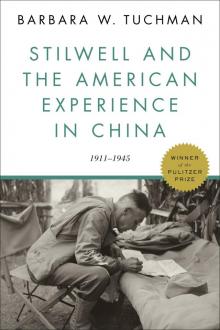 Stilwell and the American Experience in China, 1911-45
Stilwell and the American Experience in China, 1911-45 Bible and Sword: England and Palestine From the Bronze Age to Balfour
Bible and Sword: England and Palestine From the Bronze Age to Balfour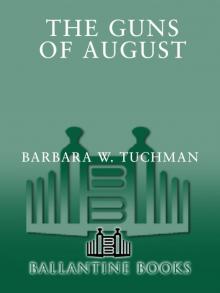 The Guns of August
The Guns of August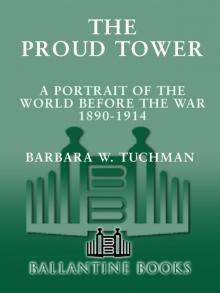 The Proud Tower: A Portrait of the World Before the War, 1890-1914
The Proud Tower: A Portrait of the World Before the War, 1890-1914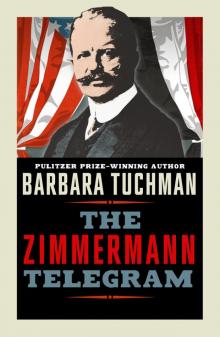 The Zimmermann Telegram
The Zimmermann Telegram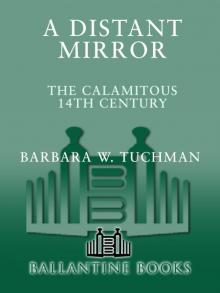 A Distant Mirror: The Calamitous 14th Century
A Distant Mirror: The Calamitous 14th Century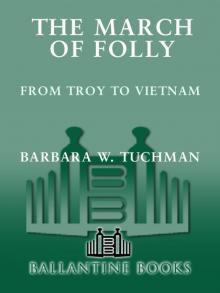 The March of Folly: From Troy to Vietnam
The March of Folly: From Troy to Vietnam The First Salute
The First Salute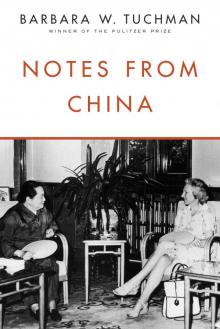 Notes From China
Notes From China Practicing History
Practicing History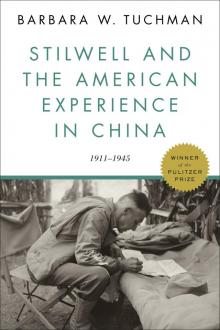 Stilwell and the American Experience in China
Stilwell and the American Experience in China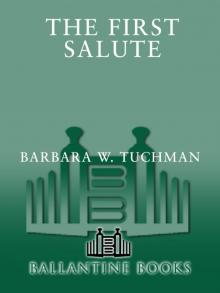 First Salute
First Salute Bible and Sword
Bible and Sword